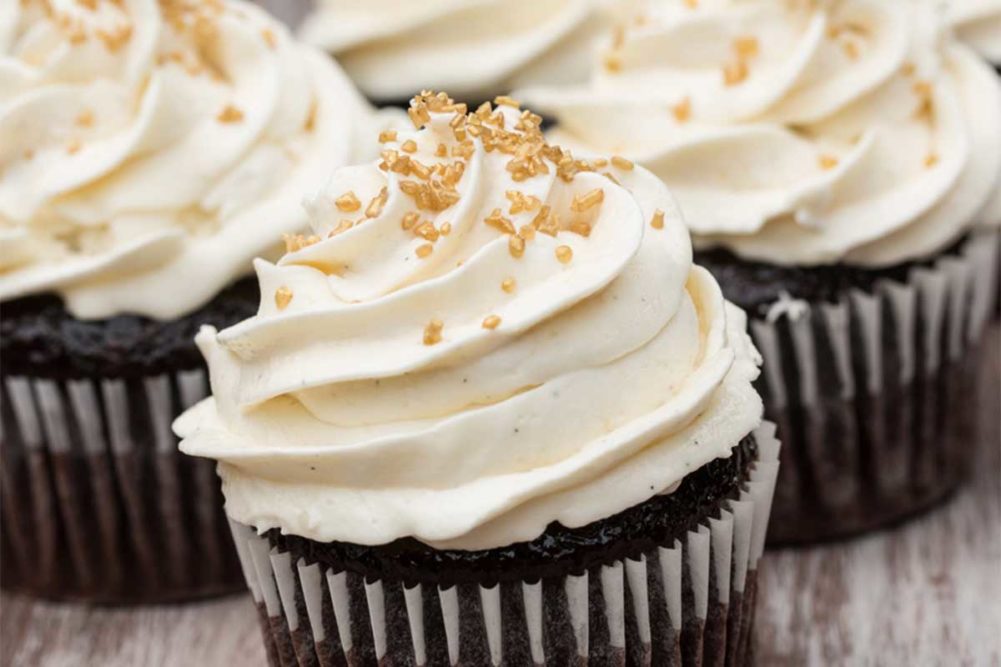Emulsifiers also become important as cake batters are by nature an emulsion with the fat forming the internal phase and the other ingredients forming the external phase. Without proper aeration, the emulsion will be thin, and that will have repercussions in the finished product. This is especially true in certain cake applications.
“High-ratio cake batters have increased levels of liquid and sugar, and it can be challenging to distribute both the shortening and trapped air from the creaming stage evenly throughout the batter,” said Andrea Weis, scientist II, AAK USA. “Emulsified cake shortenings have been developed for use in high-ratio cake batters because they help to efficiently incorporate and stabilize fine air bubbles into the shortening during the creaming stage.”
This more even dispersion results in a cake with better volume, lighter crumb and improved crumb structure. Emulsifiers’ water-binding also has benefits.
“Emulsifiers are molecules that have hydrophilic (water-loving) and hydrophobic (fat-loving) constituents,” explained John Satumba, PhD, global bakery technical lead and regional R&D director for North America, global edible oil solutions, Cargill. “We leverage emulsifiers to bind water in recipes, thereby improving overall moisture retention, which promotes longer shelf life in icings.”
Eric Spelger, principal scientist, Corbion, explained further, saying that both the solid fat indexes and the emulsifier blend within the shortening dictate the ingredient’s purpose.
“Shortenings should be at room temperature to perform their best,” he said. “The solid fat index, the percentage of fat solids in different temperature ranges, dictates the pliability and creaming ability of the shortening.”
Emulsifiers can add nuance.
“Bakers can choose to add different types of fat to manipulate the solid fat index of a plastic shortening,” Mr. Spelger said. “Bakers can add additional emulsifiers to achieve optimal batter specific gravity and improve the grain and texture of finished cakes.”
Emulsifiers are nonnegotiable if bakers are looking to use a pumpable shortening or even a more fluid cake shortening. It’s the emulsifiers that enable liquid shortenings to provide the functionality cake batters need.
“Modern fluid cake shortenings contain selected blends of emulsifiers that greatly improve their moisture-carrying capacity and also contribute to their dispersibility,” said Roger Daniels, vice president of research, development, innovation and quality, Stratas Foods. “This accounts for the shortening’s ability to produce a uniform dispersion of minute fat particles that then serve as the foci of the air cells that are ultimately responsible for the grains and texture in the baked cake.”
Bakers may want to move away from traditional cubed shortening to a fluid or pumpable one for a few different reasons. These more fluid shortenings eliminate the need for operators to scale cubed shortening, and they also help achieve greater accuracy.
“Fluid shortening can be measured and pumped through automated equipment into mixing vessels versus manually scaling and transferring a solid shortening,” Mr. Spelger explained. “A fluid shortening needs a robust emulsifier blend to perform optimally in a batter or icing system. Fluid shortenings and the application will dictate their solid fat indexes.”
Those emulsifiers have enabled food scientists to develop cake batter formulations using fluid shortenings that provide significant convenience in storage and take advantage of automated accuracy.
“In recent years, advances in emulsifier research have enabled the production of cake shortening with very little dependence on structure or solid fat content or the triglyceride portion,” said Anita Srivastava, PhD, CFS, senior technical service manager, bakery, Kemin Food Ingredients. “A typical formulation is comprised of a hard fat and an emulsifier and is processed through slow cooling of the melted fat accompanied by slow agitation. The product formed retains its fluid state for extended periods.”
In a cake application, however, there are two components: the cake and the icing. While both applications rely on aeration, the finished product is very different and the same shortening might not work in both.
This article is an excerpt from the April 2022 issue of Baking & Snack. To read the entire feature on Fats & Oils, click here.






